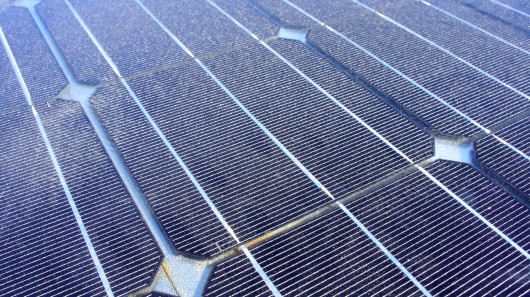Renewables top 20 percent of Germany’s energy mix for first time
By Darren Quick
00:18 September 5, 2011

Renewable sources accounted for more than 20 percent of the country's electricity generation in the first half of 2011 (Photo: Gizmag.com)
In the wake of the Fukushima Daiichi nuclear disaster, tens of thousands of German citizens took to the streets calling for the phase out of atomic energy. In May, the German government bowed to public pressure and unveiled its plan to shut down the country's 17 nuclear power plants by 2021 - with the possibility that three will continue operating until 2022 if the transition to renewable energy doesn't go as quickly as hoped. Providing some hope that Germany will achieve its ambitious goals, Spiegel Online International has quoted a newly released German Association of Energy and Water Industries (BDEW) report that says, for the first time, renewable sources accounted for more than 20 percent of the country's electricity generation in the first half of 2011.
According to the report, renewable energy sources provided 18.3 percent of total demand in 2010, but the first six months of 2011 saw that figure rise to 20.8 percent, while Germany's total usage remained steady from 2010 at 275.5 billion kilowatt hours. Although the report says the rise isn't linked to the closure of seven nuclear power plants following the Fukushima Daiichi disaster, it provides hope that Germany will be able to achieve the goal stated by Chancellor Angela Merkel for renewable sources to account for 35 percent of total electricity production by 2022.
Of the 57.3 billion kWh provided by renewable sources in the first six months of 2011, wind power was the dominant source supplying 20.7 billion kWh (7.5 percent of total production), followed by biomass with 15.4 billion kWh (5.6 percent), photovoltaic solar with 9.6 billion kWh (3.5 percent), hydroelectric with 9.1 billion kWh (3.3 percent, and waste and other sources providing 2.2 billion kWh (0.8 percent).
Solar power saw the biggest jump, increasing by 76 percent over 2010 with the BDEW citing the reduction in the price of photovoltaic installations as a result of increased competition and the decision of the federal government not to cut subsidies for private solar-power generation as initially planned as the main reasons for the increase.
"Because of the volume of new photovoltaic installations and the amount of sun during the spring, solar energy knocked hydroelectric from third place for the first time," said the BDEW.
Source: Spiegel Online International
